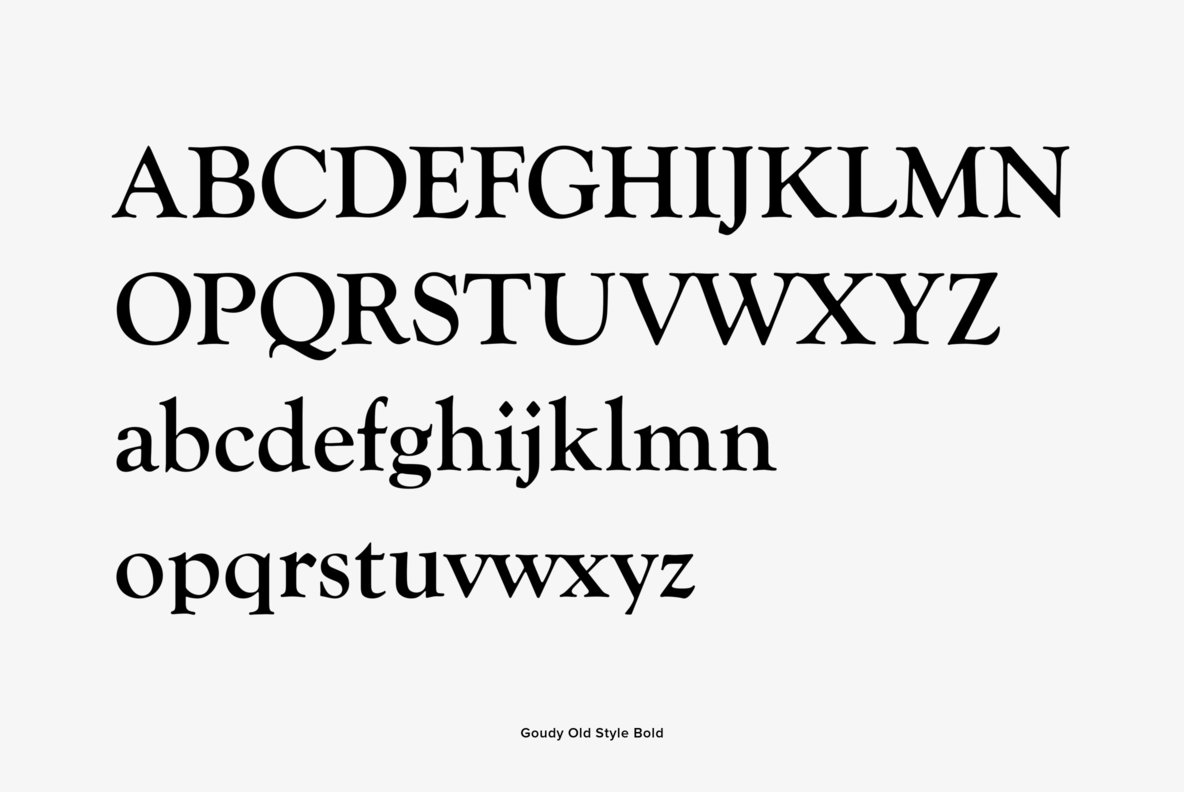
"Making Sense Of Type Classification (Part 1)." Smashing Magazine. In fact, Janson, named after Dutch punchcutter Anton Janson, is now thought to be the work of Miklós Kis, a Hungarian, produced during an apprenticeship in Amsterdam. Common examples of the Garalde faces include Caslon, Sabon, Palatino, Galliard and Janson - not to be confused with Jenson, the Humanist typeface. it to be the ivy covered ruins of some old castle of feudal times.
#Dutch old style typeface software#
The font was designed by Castcraft Software Inc and free for. Also, the difference between heavy and light stroke weights increased, and everything became more precise, perhaps due to the progress in technical aspects of making type.Ī huge amount of type was created in this era, and much of it is commonly used today, either digitized versions or new revivals. Joly is a polyvalent font family reminiscent of the 18th century Dutch style. OPTI Dutch Oldstyle is the perfect font for all your fun designs. One of the most obvious differences is the crossbar of the lowercase “e,” which, while remaining angled in the Humanist typefaces, drops to a horizontal position in the Garaldes. The serifs become more carefully formed, and characters are designed more proportionately. For contemporary uses that emulate that era, see 1940s style. Uses published in the 1940s that are in some way prototypical of that decade. The font offers uppercase and lowercase characters, special glyphs, and multilingual support. This tribal font is meant to be used for headlines, titles, logos, posters, etc. The axis of the stress straightens, and while it still has an angle, it is subtler. Examples of fonts in use tagged with 1940s. Mjölnir Old Norse Style Font (TTF, OTF, WOFF) Mjölnir Old Norse Style Font is a tribal font inspired by Nordic runes and the Viking era.

Dutch orthography uses a number of special characters, such as diaeresis (¨), acute accent (´), grave accent (), circumflex (), and tilde (), which modify.

You can see the type designers treating type as different from the written word, losing some of the idiosyncrasies of handwriting that the Humanist designers retained, while carrying over others. Dutch fonts offered by Fontfabric are typefaces designed to support Dutch language orthography specifics such as diacritical marks, which indicate certain sounds or pronunciation. There are many similarities to the Humanist faces, but things are moving in a particular direction, as we’ll see with the consecutive categories of Transitional and Didone. The category is occasionally called “Aldine” after Manutius. “Garalde” itself is a hybrid term borrowed from the names of two notable type designers of the era, French punchcutter Claude Garamont and the Venetian Aldus Manutius. This period in type history lasts from the late-15th century all the way until the early 1700s, and the type created in this period has shown remarkable longevity. I call them Garaldes here because the term “Old Style” is at times used to include Humanist, Garalde and Transitional typefaces simply calling this group “Garalde” helps to retain its identity. In the Old-Style faces, often called Garaldes, we see type really beginning to come into its own.


 0 kommentar(er)
0 kommentar(er)
